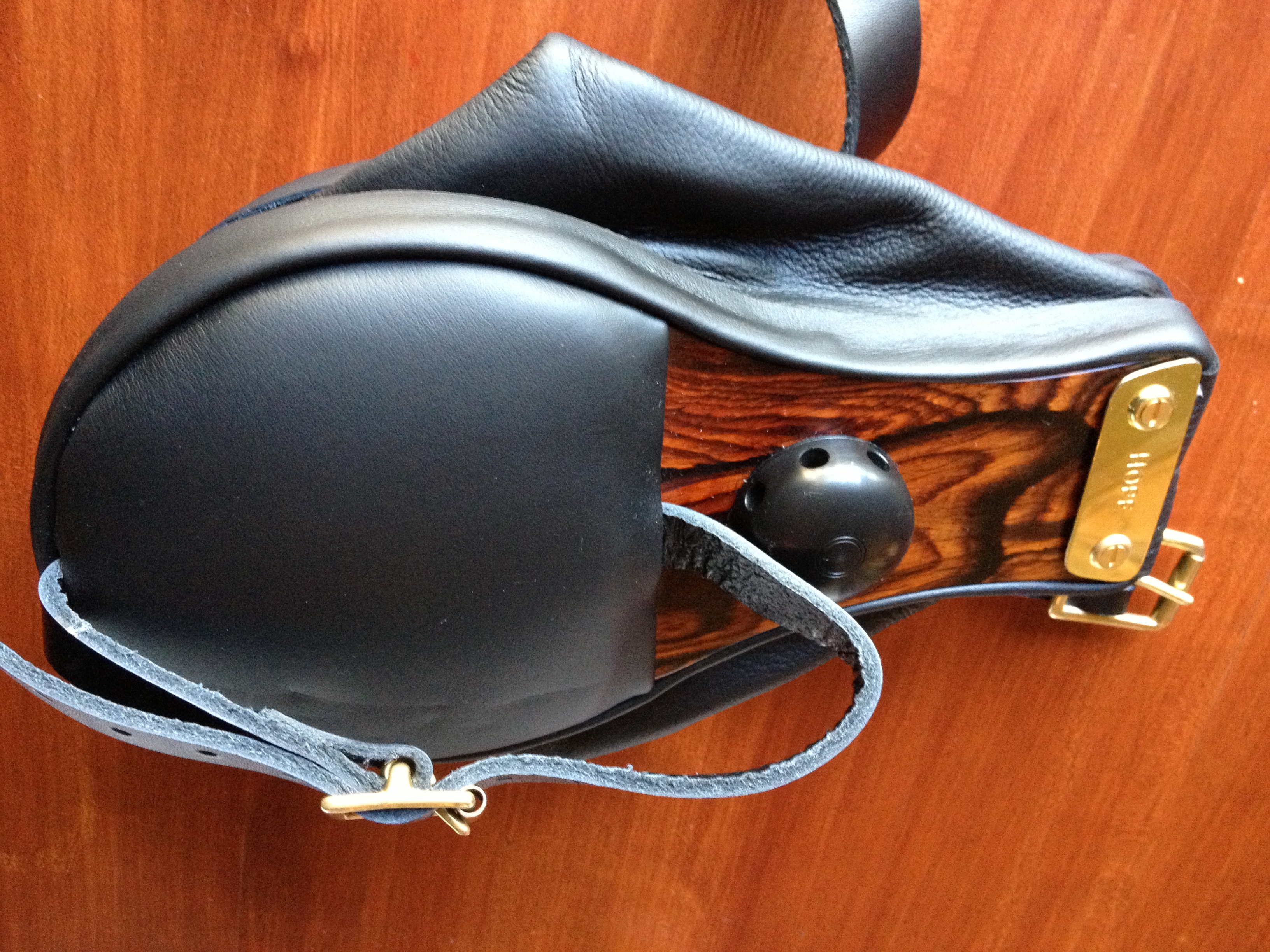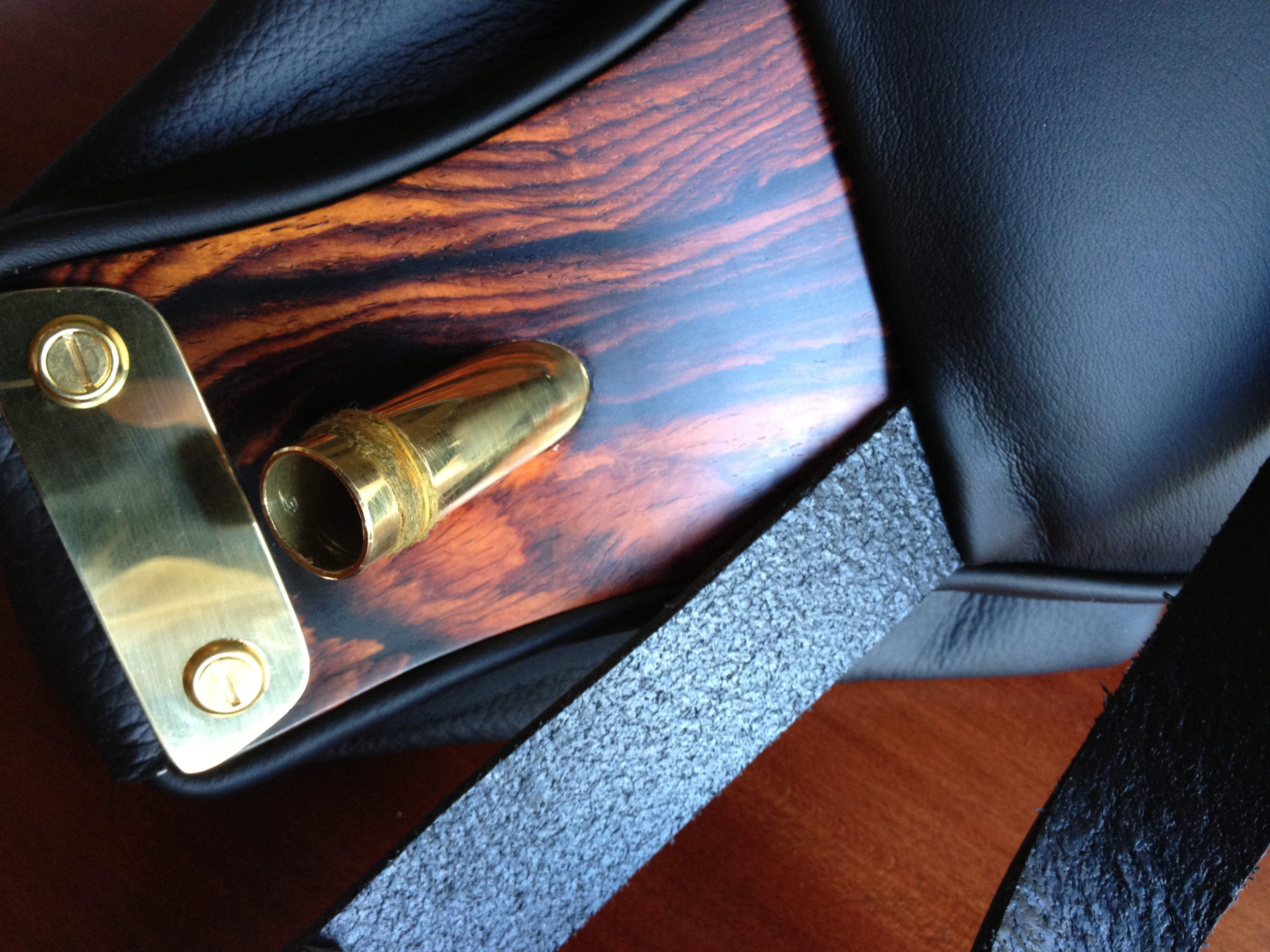I remember way back in the early days of this blog, when it was still on Vox. Jjust over four years ago the very first word of my first blog entry was “craftsmanship”. I’ve veered into baking, then home improvement, then parenting, with detours into world politics, health, and philosophy. And now I’m coming back for a brief visit in the world of craftsmanship. If variety is the spice of writing then hopefully I’m making you fan your mouth and reach for a glass of water. The good thing about this is if you hate one topic just wait a couple days and I’ll be off on something different.
Now then. I’ve been waiting for this little beauty for over a month:
What on earth is it? The people who could correctly identify it on the first try are incredibly small—are you one of them? Is it a sno-cone maker? A boudoir torture device? A steampunk prosthetic? All wrong. This is a bellows for Scottish smallpipes, a musical instrument halfway between the Highland bagpipes you see at parades and the Uillean pipes you see played in Irish bars. Why smallpipes? I’ve played the Highland bagpipes for twenty years (yikes, there’s something to make you feel old) and last year decided it would be nice to have an instrument I could practice inside without making the children cry and the wife look for a blunt weapon. The Scottish smallpipes fit the bill, a quiet and lyrical instrument that share some of the music of the Highland pipes, but are more gentle and soothing to the ear. The Highland pipes are great to get your blood stirring and your ears ringing but sometimes you don’t need a call to battle.
Alright, now why bellows? My smallpipes were mouth blown and, while familiar to someone who played Highland pipes, the option of squeezing a bellow and having my mouth free was intriguing. Okay, it just looks really cool and I like a challenge. So I found a craftsman who is renowned in the smallpipe community (there’s an internet community for EVERYTHING these days) for making the best bellows. Honestly, how good could bellows be? Maybe you’re thinking of those brass and cracked leather things your grandparents had for strengthening up an anemic fire. These are altogether different:
As soon as I opened the package I knew I held something special, something worked and thought over by a true craftsman, every move analyzed and considered, every material the only pick among a pile of discards. The leather smells right and is buttery soft. Every stitch is hidden, every strap hole lined up and neat. The wood inlay is magnificent and the brasswork is polished and tidy. See if you notice how the maker, Simon Hope, aligned the screws on the bracket. That’s the difference between a craftsman and a fabricator. There’s something about slipping on the strap and using these bellows to make music that elevates me, and it’s not just having the name “Hope” stamped into the brass. If you’ve used a perfectly-crafted tool you know it is a symbiotic relationship—you are made better by the tool as you do better with it. So I offer you this: may you all enjoy something well-crafted in your lives.


